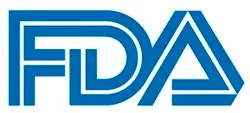News
Article
FDA Approves Eflornithine for Adult, Pediatric Patients With High-Risk Neuroblastoma
Author(s):
The FDA has approved eflornithine (Iwilfin) as a treatment to reduce the risk of relapse in adult and pediatric patients with high-risk neuroblastoma who have achieved at least a partial response to prior multi-agent, multimodality therapy including anti-GD2 immunotherapy.
FDA

The FDA has approved eflornithine (Iwilfin) as a treatment to reduce the risk of relapse in adult and pediatric patients with high-risk neuroblastoma (HRNB) who have achieved at least a partial response to prior multi-agent, multimodality therapy including anti-GD2 immunotherapy.1 The regulatory decision marks the first time that an FDA approves a therapy that is intended to reduce the risk of relapse in pediatric patients with HRNB.
The approval was based on findings from an externally controlled trial that compared outcomes from Study 3b (NCT02395666), which had an investigational arm, and Study ANBL0032, which comprised an clinical trial-derived external control arm.
In the multi-center, prospective, open label, two-cohort, non-randomized Study 3b (NCT02395666) trial, 105 eligible patients with HRNB from one cohort (Stratum 1) were treated with oral eflornithine twice daily at a dosage based on body surface area (BSA) until disease progression, unacceptable toxicity, or up to 2 years. Study 3b compared outcomes with the historical benchmark event-free survival (EFS) data that was observed in the Study ANBL0032 trial, according to the FDA.
In Study ANBL0032, a multi-center, open-label, randomized trial of dinutuximab, granulocyte-macrophage colony-stimulating factor, interleukin-2, and cis-retinoic acid compared to cis-retinoic acid alone in pediatric patients with HRNB. The external control arm comprised 1241 patients on an experimental arm.
Eligible patients for the comparative analysis of Study 3b and ANBL0032 were matched (1:3) using propensity scores. The FDA noted that the matched efficacy populations for the primary analysis included 90 patients treated with eflornithine and 270 control patients from Study ANBL0032.
The primary end point was EFS; a secondary end point was overall survival (OS).
Results showed that in the protocol-specified primary analysis, the HR for EFS was 0.48 (95% CI, 0.27-0.85); for OS, the HR was 0.32 (95% CI, 0.15-0.70). Supplementary analyses in subpopulations or using alternative statistical methods were performed because of the externally controlled study design. Here, the HR for EFS was a range from 0.43 (95% CI, 0.23-0.79) to 0.59 (95% CI, 0.28-1.27). Additionally, the HR for OS HR ranged from 0.29 (95% CI, 0.11-0.72) to 0.45 (95% CI, 0.21-0.98).
Regarding safety, the most common adverse effects occurring in at least 5% of patients in Study 3b, included otitis media, diarrhea, cough, sinusitis, pneumonia, upper respiratory tract infection, conjunctivitis, vomiting, pyrexia, allergic rhinitis, decreased neutrophils, increased alanine aminotransferase, increased aspartate transaminase, hearing loss, skin infection, and urinary tract infection.
The approval follows the October 2023 meeting from the FDA's Oncologic Drugs Advisory Committee (ODAC), in which the committee, in a 14-to-6 vote, voted that sufficient evidence has been provided to demonstrate the EFS benefit of eflornithine to reduce the risk of relapse in pediatric patients with high-risk neuroblastoma.
References
- FDA approves eflornithine for adult and pediatric patients with high-risk neuroblastoma. FDA. News release. December 13, 2023. Accessed December 13, 2023. https://www.fda.gov/drugs/resources-information-approved-drugs/fda-approves-eflornithine-adult-and-pediatric-patients-high-risk-neuroblastoma
- Oncologic Drugs Advisory Committee Meeting. FDA. October 4, 2023. Accessed October 6, 2023.







